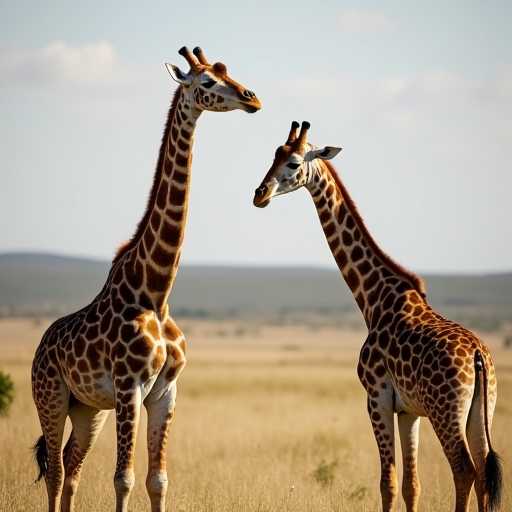
Why Do Giraffes Use Necks for Communication?
Giraffes are fascinating creatures that have intrigued scientists and animal enthusiasts alike for centuries. Known for their towering height, unique spot patterns, and long necks, these gentle giants are instantly recognizable. While the evolution of the giraffe’s neck has often been attributed to feeding advantages, it also plays a crucial role in communication. In this article, we will delve into the ways giraffes use their necks to interact with one another and the implications of this behavior.
The Anatomy of a Giraffe's Neck
Before exploring how giraffes use their necks for communication, it is important to understand their anatomy. A giraffe's neck can reach up to six feet in length and consists of seven elongated vertebrae, similar to most mammals. This adaptation not only allows them to reach high vegetation but also plays a critical role in their social interactions.
Necking: A Form of Social Interaction
Giraffes engage in a behavior known as "necking," which involves using their necks in a variety of interactions. Necking can be classified into two primary forms: aggressive and non-aggressive.
Aggressive Necking
Aggressive necking is primarily observed among male giraffes and is a critical behavior in establishing dominance and hierarchy within herds. During these bouts, males stand side by side and swing their necks at each other, attempting to land blows with their heads. The force of these swings can be quite powerful, often determining the victor of the contest. The winner of these matches gains access to females for mating, thus ensuring that only the strongest genes are passed on.
Non-Aggressive Necking
Non-aggressive necking is more subtle and often occurs between females or between males and females outside the context of competition. This behavior is used to establish social bonds, express affection, and provide reassurance within the group. It involves gentle rubbing of necks and heads, reminiscent of nuzzling seen in other animal species.
Necking as a Communication Tool
Giraffes lack vocal cords, which limits their ability to produce a wide range of sounds for communication. Instead, they rely heavily on body language, with necking being a pivotal aspect. Here's how giraffes use their necks for communication:
Establishing Hierarchy
Necking contests are not only about physical dominance but also serve as a form of communication to establish social hierarchy. Through these interactions, giraffes communicate their strength and status within the group, which is vital for maintaining order and reducing conflict.
Courtship and Mating
During courtship, male giraffes use their necks to communicate their interest and readiness to mate. By engaging in gentle necking with females, males signal their intent and assess the female's receptiveness. This form of communication is crucial in facilitating mating rituals and ensuring reproductive success.
Social Bonding
Necking is an important social tool among giraffes. Through gentle contact, individuals can reinforce social bonds, convey trust, and demonstrate affection. This behavior is especially important in maintaining cohesion within herds, particularly among females and their young.
The Evolutionary Perspective
The evolution of the giraffe's neck is often discussed in the context of natural selection. While the primary advantage of a long neck may be related to feeding, the role of necking in communication cannot be overlooked. The dual function of the giraffe's neck in both foraging and social interactions suggests that it has been a significant evolutionary adaptation.
Sexual Selection
In addition to natural selection, sexual selection has likely played a role in the evolution of the giraffe's neck. Males with longer, stronger necks are more successful in necking contests, thus having better mating opportunities and passing on their genes.
Conclusion
Giraffes are remarkable examples of how physical adaptations can serve multiple functions in the animal kingdom. Their long necks are not only advantageous for reaching food in tall trees but are also crucial tools for communication. Through necking, giraffes establish social hierarchies, facilitate courtship, and strengthen social bonds, demonstrating the complex and multifaceted nature of animal communication. Understanding these behaviors enriches our knowledge of giraffe societies and highlights the intricate ways in which animals interact and communicate within their environments.
